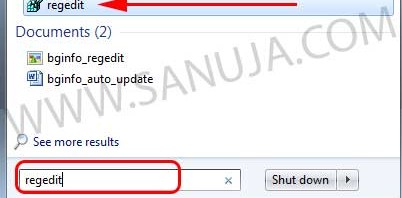I just ran in to a huge problem. I accidentally deleted a documentary file over the network. The network drive was mapped to my computer and the folder was located on the server hard drives. No matter what back up I had, I deleted the entire documentary by mistake on the network drive and now I can’t find it anyway. This is a huge overlook that still we face in share folders in Microsoft Windows environment. I don’t know Continue reading Deleting files over a network
Category Archives: Computer Science
Computer Science (CS) and Information Technology (IT) related items will be posted under this category. Topics include, but not limited to, system administration, hardware/software troubleshooting, coding/programming (PHP, HTML, Java, Python, etc) and more.
Website migration and future of the site
Last week was super busy because I got the flu on top of exams and papers as usual. Each year around February to March I get the seasonal flu. I also had to write the Geochemistry midterm II, which is crucial for my success in the geology program. In the midst of my anxiety over the exams and the upcoming draft paper on the analysis paper for the Science 311, I decided to migrate all my data, exception to the Science site, from general PHP database with no CMS (Content Management System) to completely WordPress(WP) based system. I didn’t have to do much other than copying and pasting the data from old files since WP module has been installed and running on my server for the last few months. The old pages are still slowly being phased out. I will keep the old pages until Google decided to take them down from their indexed pages. With this migration, as the site admin my work load has been cut down significantly. The process of adding new information, pages, data, media, modifying existing data, layout, etc is much easier and faster with WP CMS. Since I am still working my degree, I may not update the site often, but I will do my best to come up with new information for the readers. Continue reading Website migration and future of the site
Thank you Google for all the free stuff
When I first started working with HTML, one problem I run in to was in order to create a great user experience I had to import scripts from several different third party service providers. For example, the site visitor data was kept by a one company and the contact form from another. The problem is that these companies that provide such services are asking too much in return from web developers. Not only they forcefully post pop-up ads and other useless materials, but also referral URLs to back to their sites are often open in the same window causing the visitor to exit the site itself. I managed to avoid some of these issues by loading PHP, SQL and Java databases to the server and facilitating packages such as WordPress. For items such as Contact forms now I use my own PHP script that save data on my own server. For visitor logging I created the ip log file code, but it is time consuming to go over millions of IP addresses to analyzing treads and traffic flow to this site. Continue reading Thank you Google for all the free stuff
PHP based password protected access point
I found a PHP based script that will protect data from the general public. This is done using a simple PHP script that will terminate the page data from processing in HTTP request if a correct credential is not entered. The key part of this script is that it can be saved in any folder on the server regardless of the folder access is public or private. The script can be used to protect any web page using the PHP’s native data loading mechanism. I have no idea how secure the PHP script now protecting the secure science area. That’s where detailed user records comes in handy because in an event of a hack or a flooding, I can monitor the situation and close down all lose ends of the system. Continue reading PHP based password protected access point
How to delete a Remote Desktop Connection entry
There is no option in the Microsoft Remote Desktop Connection (RDP) application to delete/remove successful previous RDP connection IP or hostnames from its “Computer” box. I believe this is an omission by the Microsoft development teams that has yet to be “fixed”. In fact, I had no clue how to do this up until recently I had to log in to my server from a public school computer to modify some files. Even after you log out and select delete profile from the RDC, it will still show up in the Connections drop down next time someone open it. This is a problem because if a user with wrong intent to attack your computer or server open the RDC, it will provide them with half of the solution to hack your system, the IP or domain name!
If you try Google search to find an answer to this issue, you will quickly come across Microsoft KB article here, which is more complicated than useful to most users. I have no idea why a great user friendly software company like Microsoft doesn’t explain well on their help sites on registry editing for intermediate to advance users. May be because they don’t want novice users to pick up that information from their site and damage the OS in the process of regedit. Would you rather have a video tutorial? Please watch the YouTube video here.
The following method is the easiest way to delete an entry from Remote Continue reading How to delete a Remote Desktop Connection entry
